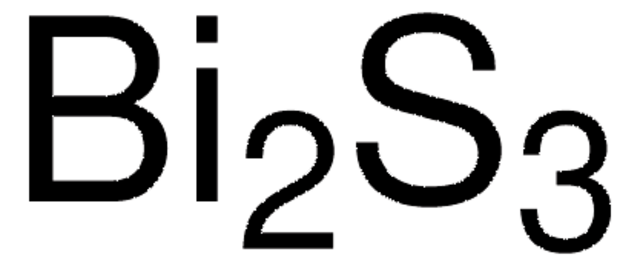202827
Bismuth(III) oxide
powder, 99.999% trace metals basis
Synonym(s):
Dibismuth trioxide
About This Item
Recommended Products
Quality Level
Assay
99.999% trace metals basis
form
powder
reaction suitability
reagent type: catalyst
core: bismuth
SMILES string
O=[Bi]O[Bi]=O
InChI
1S/2Bi.3O
InChI key
WMWLMWRWZQELOS-UHFFFAOYSA-N
Looking for similar products? Visit Product Comparison Guide
Related Categories
Application
- Mass spectrometry standards: A significant advancement was made in developing an enantioselective high-performance liquid chromatography-tandem mass spectrometry method for the quantitative determination of methorphan and its O-demethylated metabolite, dextrorphan-d₃, in human blood, specifically for forensic applications in post-mortem samples. This method underscores the utility of stable isotope-labeled compounds like dextrorphan-d₃ in precise pharmacological research (Lo Faro et al., 2023).
Features and Benefits
WGK
nwg
Flash Point(F)
Not applicable
Flash Point(C)
Not applicable
Personal Protective Equipment
Certificates of Analysis (COA)
Search for Certificates of Analysis (COA) by entering the products Lot/Batch Number. Lot and Batch Numbers can be found on a product’s label following the words ‘Lot’ or ‘Batch’.
Already Own This Product?
Find documentation for the products that you have recently purchased in the Document Library.
Customers Also Viewed
Articles
Thermoelectric Performance of Perovskite-type Oxide Materials
The prevailing strategies for heat and electric-power production that rely on fossil and fission fuels are having a negative impact on the environment and on our living conditions.
Our team of scientists has experience in all areas of research including Life Science, Material Science, Chemical Synthesis, Chromatography, Analytical and many others.
Contact Technical Service










